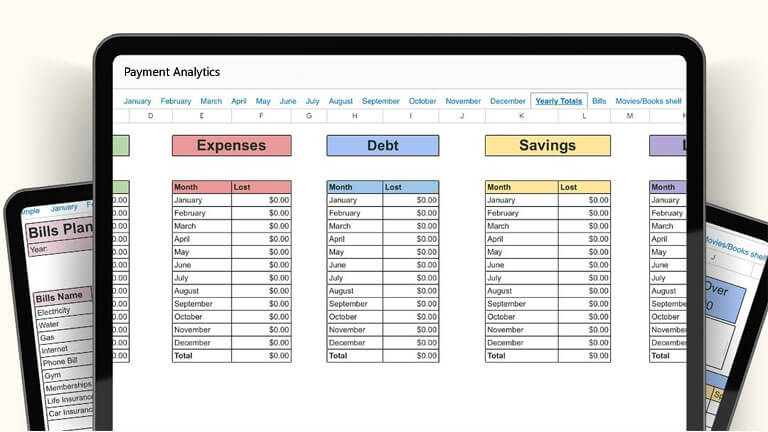
Businesses that need to incorporate payment analytics into their operations risk losing a significant competitive edge. This data-driven practice reveals patterns that enable companies to refine decisions, streamline operations, and optimize their payment processes for revenue growth. Tracking KPIs like average order value can help guide sales and marketing strategies. For example, understanding that transaction volume is higher at the end of the month may lead to a shift in resource allocation.
Customer Experience
Almost all business activities like traditional & digital marketing, sales, product development, and website development depend heavily on an in-depth understanding of your customer. Payment analytics is helpful because it gives businesses insightful information about the behavior of their customers, which helps them make intelligent strategic decisions and spur rapid business expansion. Specifically, payment data analytics helps businesses identify and optimize their pricing strategies, detect fraudulent transactions, and improve the overall security of their payment process. It is achieved by analyzing key metrics such as transaction history, payment methods, and purchase trends.
Moreover, by leveraging the power of payment analytics, businesses can enhance their customer service operations. For example, businesses can offer customized products and services by identifying trends in customer purchasing patterns. Similarly, by assessing customer retention rates and churn risks, they can take preventive measures to reduce loss of revenue. This way, they can achieve a positive customer experience and sustain long-term growth. The key is developing a data-driven decision-making culture rather than relying on hunches and assumptions.
Decision-Making
A data-driven approach to decision-making helps companies remove biases and personal opinions from their decisions. It also empowers businesses to uncover patterns, trends, and correlations within their data that can help them make informed choices and improve performance. This results in better decision outcomes, increased operational efficiencies, and the ability to adapt and innovate as necessary in today’s fast-paced business landscape. As the demand for data-driven decision-making grows, companies turn to data analytics to support their strategic goals. The availability of improved and easier-to-use technology has democratized the data-driven process, making it accessible to business leaders across departments. It is essential for data-driven decision-making, ensuring that all key players can access and act on the insights they need to achieve their desired outcomes. Organizations can use appropriate tools and platforms to develop an operating protocol to satisfy all data requirements. It includes developing for purpose, ensuring data is easily accessible, and supporting collaboration across teams and regions that have previously been siloed. By doing so, companies can make more confident business decisions that have the potential to deliver long-term success and growth.
Marketing
It’s no secret that marketing requires creative and analytical skills. Data-driven marketing is the application of real-time customer data to inform marketing decisions and create more effective campaigns. This approach aims to connect with customers quickly, resulting in increased ROI and revenue growth. Transactional data provides valuable insights into who is buying what, when, and where. These insights allow marketers to personalize the experience for consumers, creating more trust between the brand and the consumer. Personalized experiences can lead to 5-8 times the ROI of non-personalized experiences.
Streamlining decision-making with real-time data allows businesses to respond quickly to changing trends and opportunities in their market. For example, analyzing payment data can identify patterns in supplier payments, making it easier to spot recurring invoices and automate invoicing processes to improve cash flow. It also enables more proactive risk management as businesses can anticipate potential cash flow challenges and take preventative action to avoid them. It is a decisive advantage that can help businesses remain competitive in their markets.
Risk Management
Payment analytics helps businesses gain insights into supplier payment data to help inform business decisions and improve outcomes. Develop focused marketing campaigns, modify pricing plans, and more with the help of these insights. By monitoring transactional data, businesses can identify patterns that indicate potential fraud or suspicious activities, such as sudden transaction spikes, high-value purchases, or unusual locations. By identifying these patterns, businesses can immediately prevent fraud and mitigate losses.
Additionally, by analyzing historical payment data, businesses can predict future cash flow trends and take proactive measures to avoid potential disruptions. For example, suppose a particular customer’s purchase history tends to lead to chargebacks. In that case, the business can work with the customer to improve communication of policies and optimize invoicing processes to minimize chargeback rates. Payment data analysis has numerous benefits that help companies make strategic decisions that increase revenue and boost operational effectiveness. Businesses can unlock the full potential of payment analytics by leveraging a powerful payments orchestration platform that simplifies the management of multiple payment providers, gateways, and methods.
Product Development
Data-driven is more than just a buzzword; data analytics is critical to all aspects of product development – from conceiving and developing a digital product or service to designing and launching it to market. Whether it’s a data-backed business case to gain buy-in from stakeholders to secure resources or using real-time user feedback and performance metrics to drive product updates that maximize user value, it is critical to have a strong product management strategy.
The digital age has ushered in unprecedented data availability and advanced analytical tools, allowing organizations to process, make sense of, and use large datasets quickly. It allows them to create and launch more competitive and customer-focused products.
A data-driven approach to digital product development can help companies create differentiating products that delight customers, provide new revenue lines, and scale with their businesses. However, it is essential to remember that data alone is not enough – you also need to have the right people and processes in place. It includes ensuring data quality and reliability, training and governance for team members, and prioritizing actionable insights over overwhelming data.




